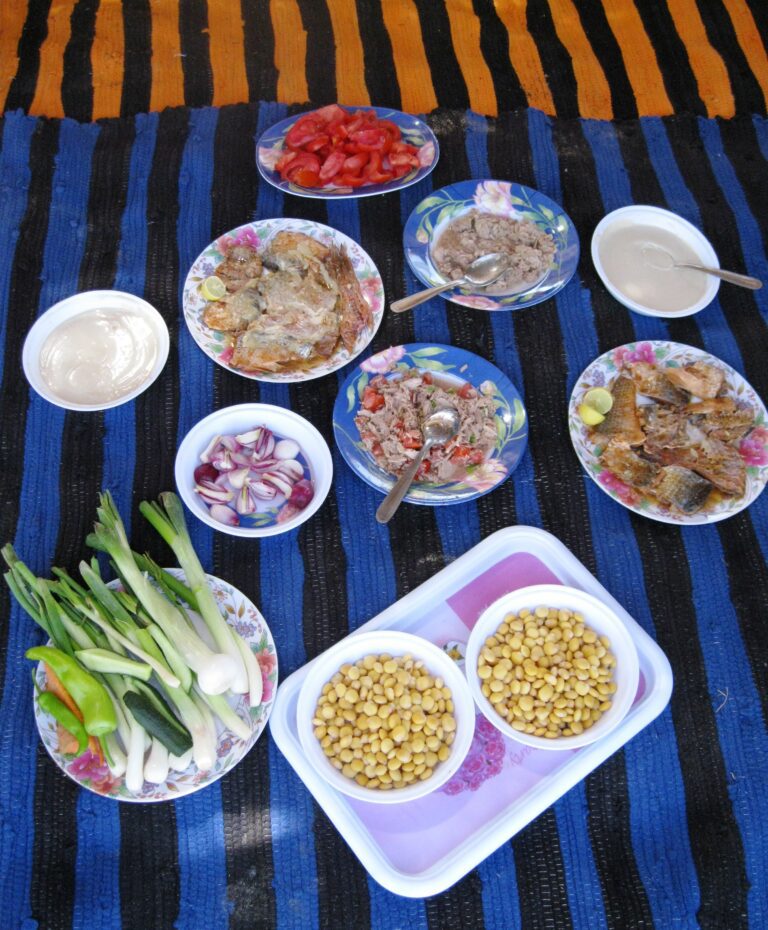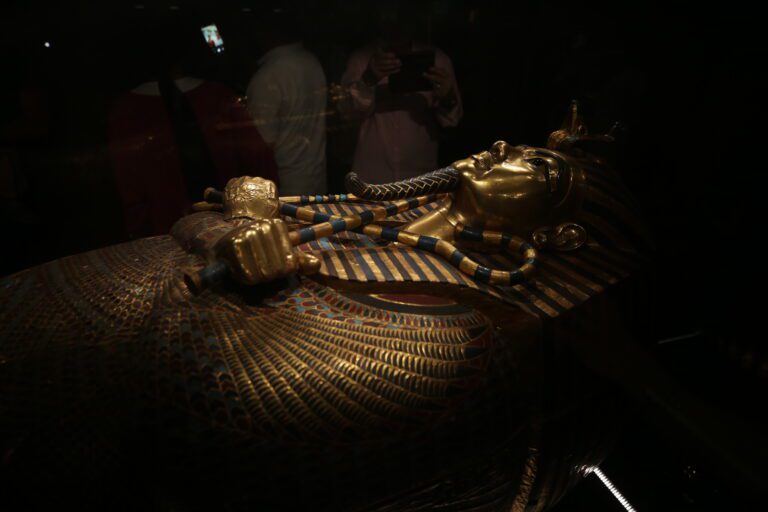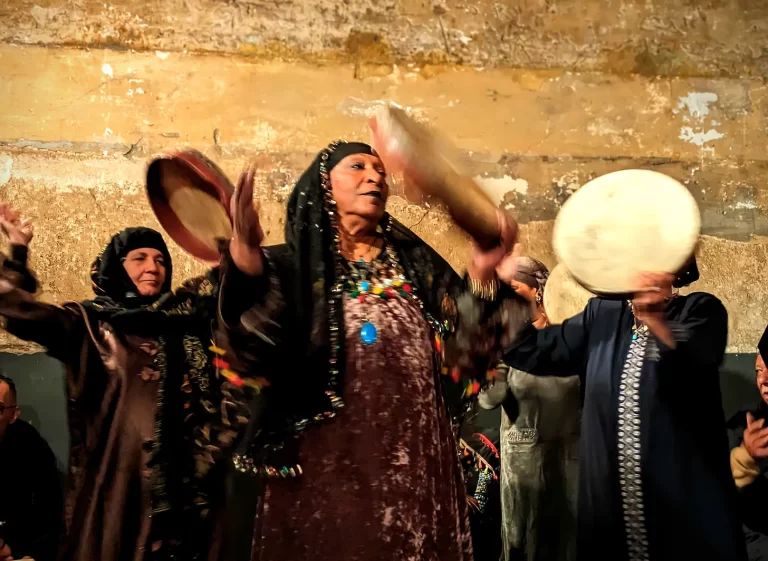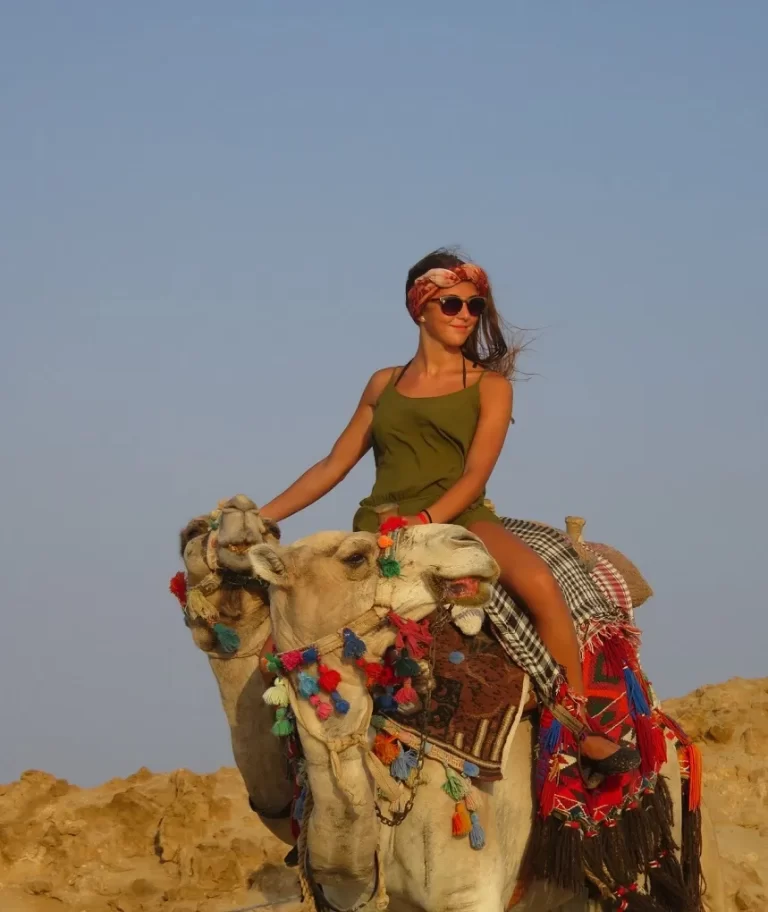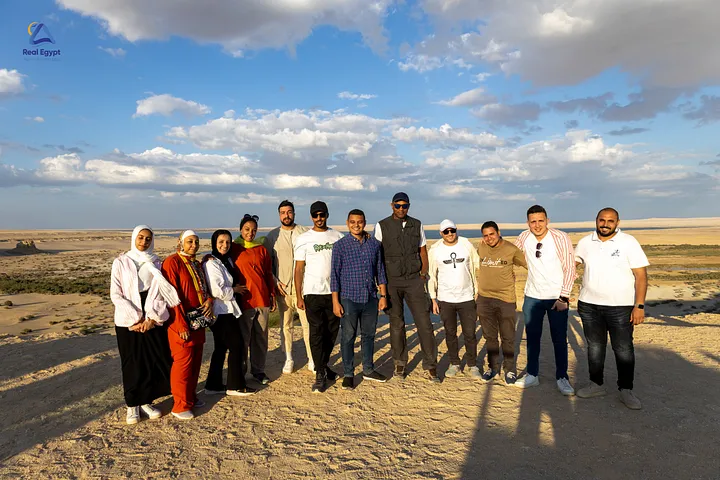In Islam there are two major Eid celebrations: Eid al-Fitr which marks the end of Ramadan and Eid al-Adha the Festival of Sacrifice which coincides with the Hajj and commemorates prophet Abraham’s sacrifice of a sheep in place of his son Ishmael.
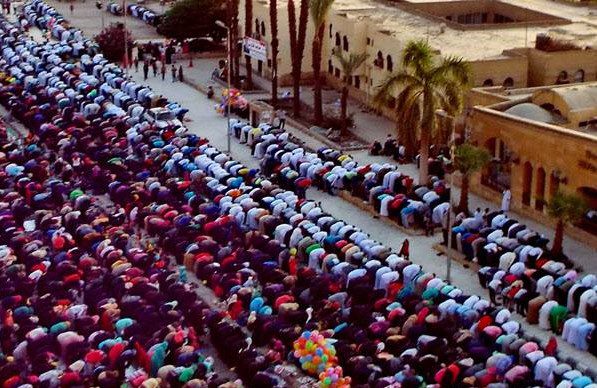
Eid prayers in Cairo
Eid al-Fitr is celebrated by Muslims after fasting through the month of Ramadan, and is usually a three day holiday in Egypt. It is a time of gratitude to Allah (God). It takes place on the first day of Shawwal, the tenth month of the lunar calendar.
Eid al-Fitr is celebrated with the wearing of new clothes, giving of gifts, and food. The Eid day starts with Eid prayers in congregation at mosques throughout Egypt, attended by men, women and children. Greetings are exchanged between neighbors, friends and relatives. The most common greeting is “Eid Mubarak”, have a blessed Eid.
Children are given gifts, traditionally new clothes to wear throughout Eid. Women are often given special gifts by their families. Children may also be given Eidyah by adult relatives, a small amount of money to spend on their entertainments during Eid. Families picnic in parks, gardens, and other green areas, even green median strips or traffic islands on roads, go to amusement parks, or take a boat ride. In some neighborhoods swings or other rides may be set up for the children to enjoy, or there may be storytellers or puppet shows.
TV also provides entertainment during the holiday, featuring movies and showing Eid celebrations.
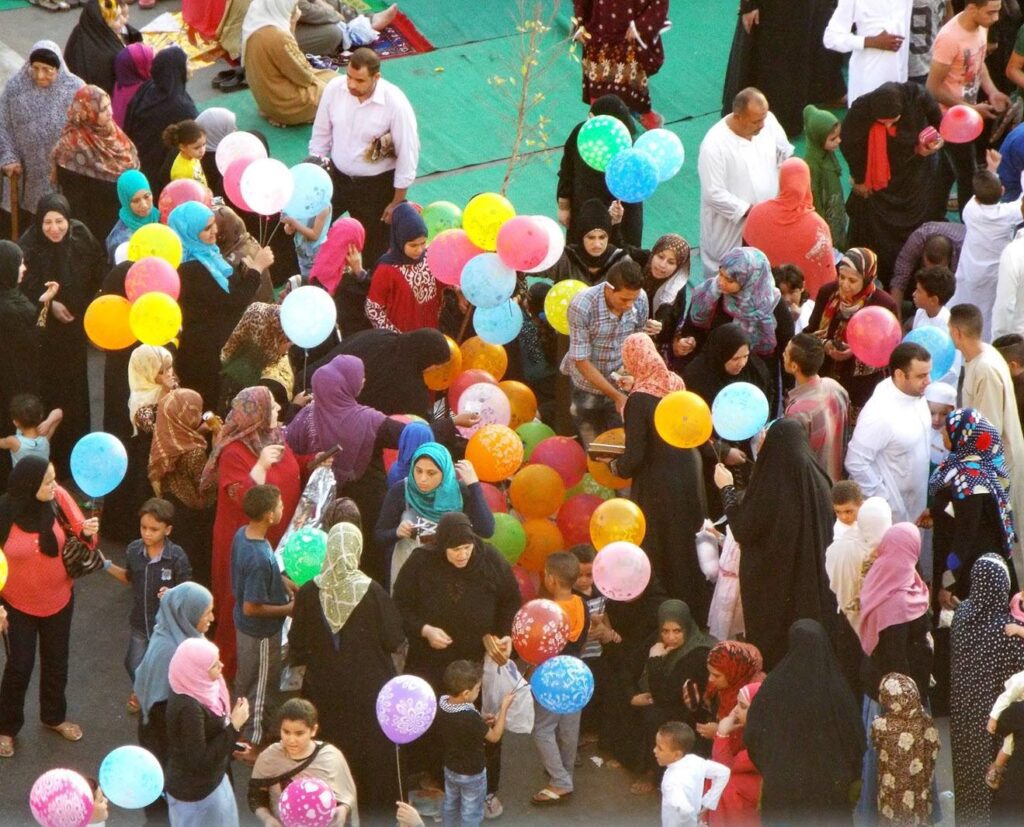
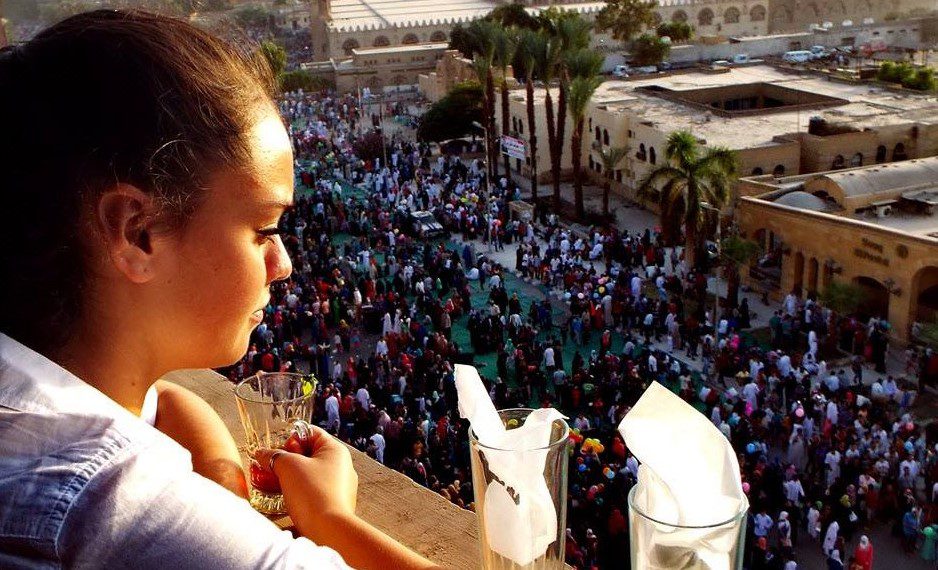

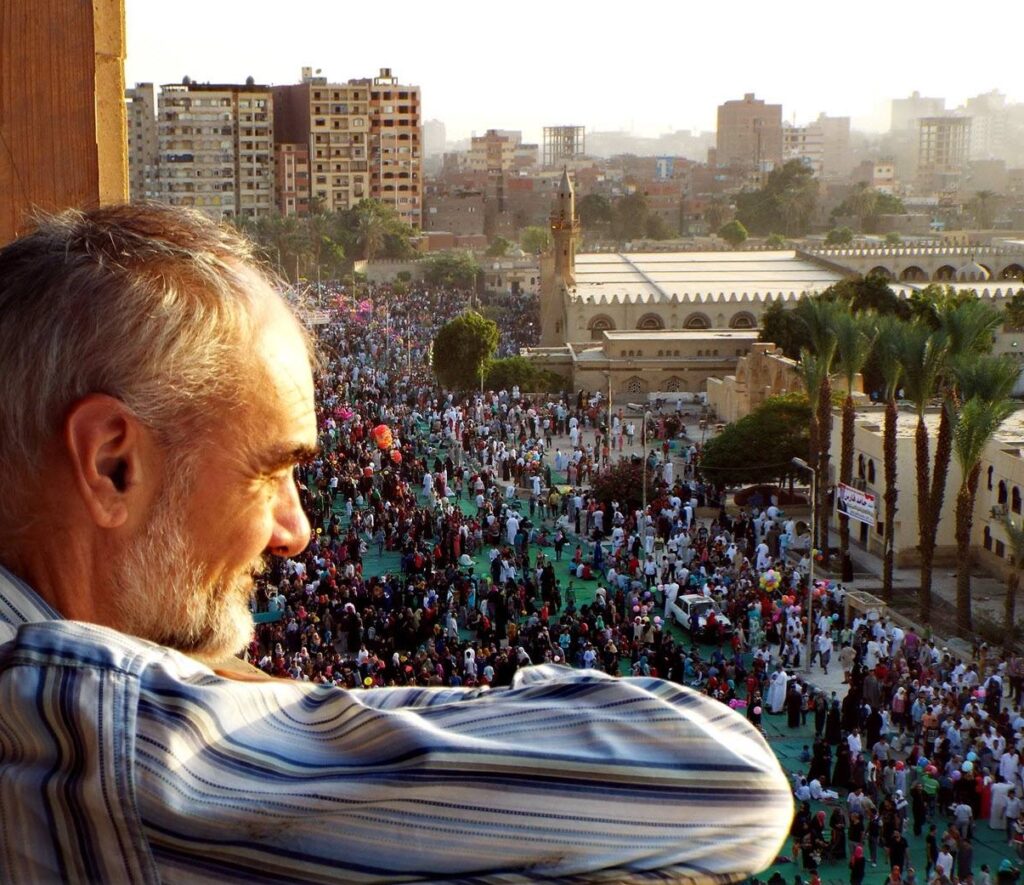
watching the Eid prayers and enjoying this special time together
In Ya Leilat el Eid (Oh Night of Eid) Umm Kalthoum sang:
”Oh (Night of) Eid, you’ve delighted us and renewed our hope
Oh Eid, your (crescent) moon has appeared before our eyes
It filled us with happiness and we sang
And we said that happiness/fortune will come to us
Upon your arrival, oh Night of Eid
You’ve brought all the close friends back together
And the cup has passed among the companions
And the birds are singing in the trees to greet the dawn
Oh Night of Eid
As my beloved’s ship sails, my soul travels on the wind
Tell him, my dear, it’s early
Sleep is forbidden on the Night of Eid
Oh Nile, your waters are sweet
You spread light throughout the fields
May you live long and prosper, oh Nile
And enjoy many Nights of Eid.”
English translation from Arabic thanks to Arabic Song Lyrics and Translations
Ya Leilet el Eid – Umm Kulthum https://soundcloud.com/mohammadalshehri/ya-leilet-el-eid-umm-kulthum
Many foods are eaten but the item most associated with Eid al-Fitr is Kahk, a round, buttery sugar cookie with a fine crumb, delicate texture, and aromatic flavor. These cookies are baked at home or bought at commercial bakeries and stores. Some start baking from the first days of Ramadan, some start the night before Eid.
A few days before Eid, this video shows community kahk making at Bayt Yakan in Cairo.
(Bayt Yakan is a renovated 17th century house located in Darb el Labbana, and is the base of an initiative that organizes events and workshops for the community which focus on heritage and art/culture).
Some believe the tradition of kahk reaches back to pharaonic times. Kahk is favoured by Egyptian Muslims to mark the end of Ramadan and by Egyptian Christians at Christmas and Easter.
Most homes have ovens but there are still places where baking sheets of kahk are carried from homes to community ovens. Kahk are sent to family and friends at Eid. As with shared iftar (breaking of the fast) during Ramadan, sharing and community are essential to Eid, from shared worship to delicious treats.
https://www.youtube.com/watch?v=MgpRe4LkQ_E
Video thanks to Middle East Eye
How to make Kahk – Eid cookies
There are possibly as many versions of Kahk as there are cooks. This version has pistachio and honey filling, but walnuts or dried date paste also make delicious kahk.
Ingredients
3 cups flour
salt – approximately ⅛ teaspoon
1 tablespoon granulated sugar
½ teaspoon cinnamon or Kahk spices (the blend changes from family to family and may include cardamom powder, ground cinnamon, ground cloves, nutmeg, fennel)
3 tablespoons toasted sesame seeds – optional but recommended
½ teaspoon dry yeast
1 cup ghee – room temperature and not melted. Some cooks use butter, but ghee gives an authentic taste
⅓ cup warm water
to serve: powdered sugar
Pistachio and honey filling
1 tablespoon ghee or butter
1 tablespoon flour
1 teaspoon sesame seeds
¼ cup honey
½ cup pistachios coarsely ground
Directions
Place in a mixing bowl: flour, salt, sugar, yeast, cinnamon and sesame seeds.
Add the ghee and mix until completely incorporated.
Add water and continue mixing until you have a consistent dough.
Cover and let it rest for an hour.
Prepare the filling. In a small pot over medium heat add ghee or butter then add flour, mix until flour turns golden brown.
Remove from heat, add sesame and honey mixing well, return mixture to low heat until it thickens.
Remove from heat, add pistachios and mix well.
Let the filling cool for 10 minutes, then form into 20 small balls.
After an hour divide the dough equally into 20 balls, of 40gm each approximately.
Place dough balls on a plate and cover. Take a ball of the dough, put one ball of the pistachio filling (or other filling you prefer) in the center, close the dough to form a ball.
Press lightly into a Mamoul tool (carved wooden decoration utensil) or simply use a fork to press a pattern on the surface.
Place cookies on a parchment lined cookie sheet, bake in a 350 F (180 C) oven for 20 to 25 minutes or until the bottom is golden brown.
Let it cool down on a wire rack.
Store in an airtight container.
When it is time to eat, sprinkle the top with powdered sugar.
EID MUBARAK from REAL EGYPT

